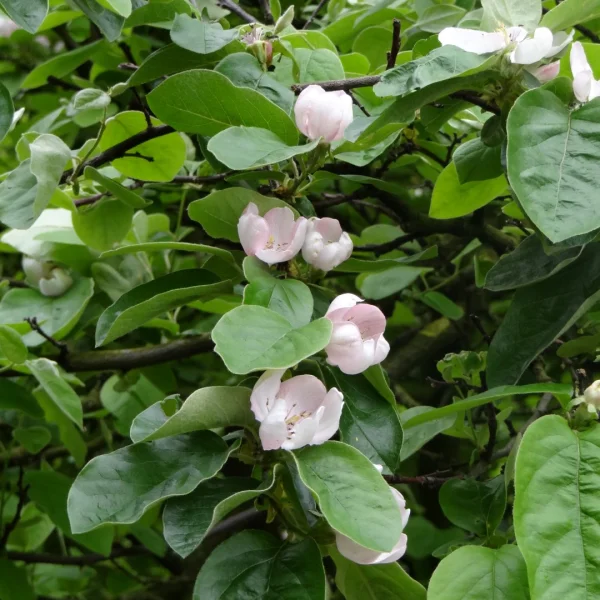Mespilus germanica – Common wild medlar
Rosaceae
Mespilus germanica – Common wild medlar
Acest copac cu creștere lentă este originar din părți din sudul Europei și din vestul Asiei. Ramurile principale grele formează în cele din urmă o coroană neregulată. Exemplarele vechi sunt adesea mai late decât înalte. Crengile tinere sunt gri și cu părul lânos. Trunchiul mai bătrân este neted și gri deschis. Frunzele alungite sau ovoidale inversate sunt foarte fin zimțate și ușor păroase. Toamna se transformă în maro-roșcat până la portocaliu-auriu. Fructele brune, tari, au buze mari ale caliciului. Numai atunci când încep să putrezească sunt comestibile. Acest lucru se întâmplă adesea după primul îngheț nocturn. Există mai multe soiuri selectate pentru mărimea fructelor. Înrădăcinare adâncă. Tolerează solul calcaros, este robust și deosebit de rezistent la căldură.
Availability
Specifications
Download PDF
Height
4 - 6 (8) m, slow growing
Width
4-6m
Crown
flat spherical, capricious, dark, dense crown, capricious growing
Bark and branches
light grey, young twigs dark brown grey, woolly-haired
Leaf
lanceolate to obovoid, dark green, 6 - 14 cm
Autumn colour
yellow
Flowers
terminal, saucer-shaped, white, Ø 3.5 - 5 cm, May/June
Fruits
brown, large calyx valves, Ø 4 - 5 cm, edible fruits
Spines/thorns
None
Toxicity
usually not toxic to people, (large) pets and livestock
Soil type
fertile and moisture-retentive
Paving
tolerates no paving
Winter hardiness zone
5b (-26,0 to -23,4 °C)
Wind resistance
good
Other resistances
resistant to frost (WH 1 - 6), can withstand wind
Fauna tree
aluable for bees (honey plant), provides food for birds
Application
tree containers, roof gardens, small gardens, patio gardens
Shape
clearstem tree, multi-stem treem, clearstem fruit tree
Origin
West Asia, South Europe
Possibly of interest
Frequently asked questions
Mespilus germanica
Mespilus germanica can eventually reach a height of 4 - 6 (8) m, slow growing, depending on the site and climate conditions.
Mespilus germanica has a slow growing and can eventually reach a height of 4 - 6 (8) m, slow growing, depending on the site and climate conditions.
The leaves of Mespilus germanica turn yellow in autumn.
The right time to plant Mespilus germanica is during the dormancy period. In Western Europe, Mespilus germanica with root balls can generally be planted from mid-November to late April, although this depends strongly on the climatic conditions and the species of tree.
may.
General
 English
English
 English (United Kingdom)
English (United Kingdom)
 Nederlands
Nederlands
 Nederlands (België)
Nederlands (België)
 Deutsch
Deutsch
 français
français
 čeština
čeština
 polski
polski
 español
español
 română
română
 dansk
dansk
 svenska
svenska
 magyar
magyar
 Türkçe
Türkçe
 slovenčina
slovenčina
 русский
русский
 norsk
norsk








